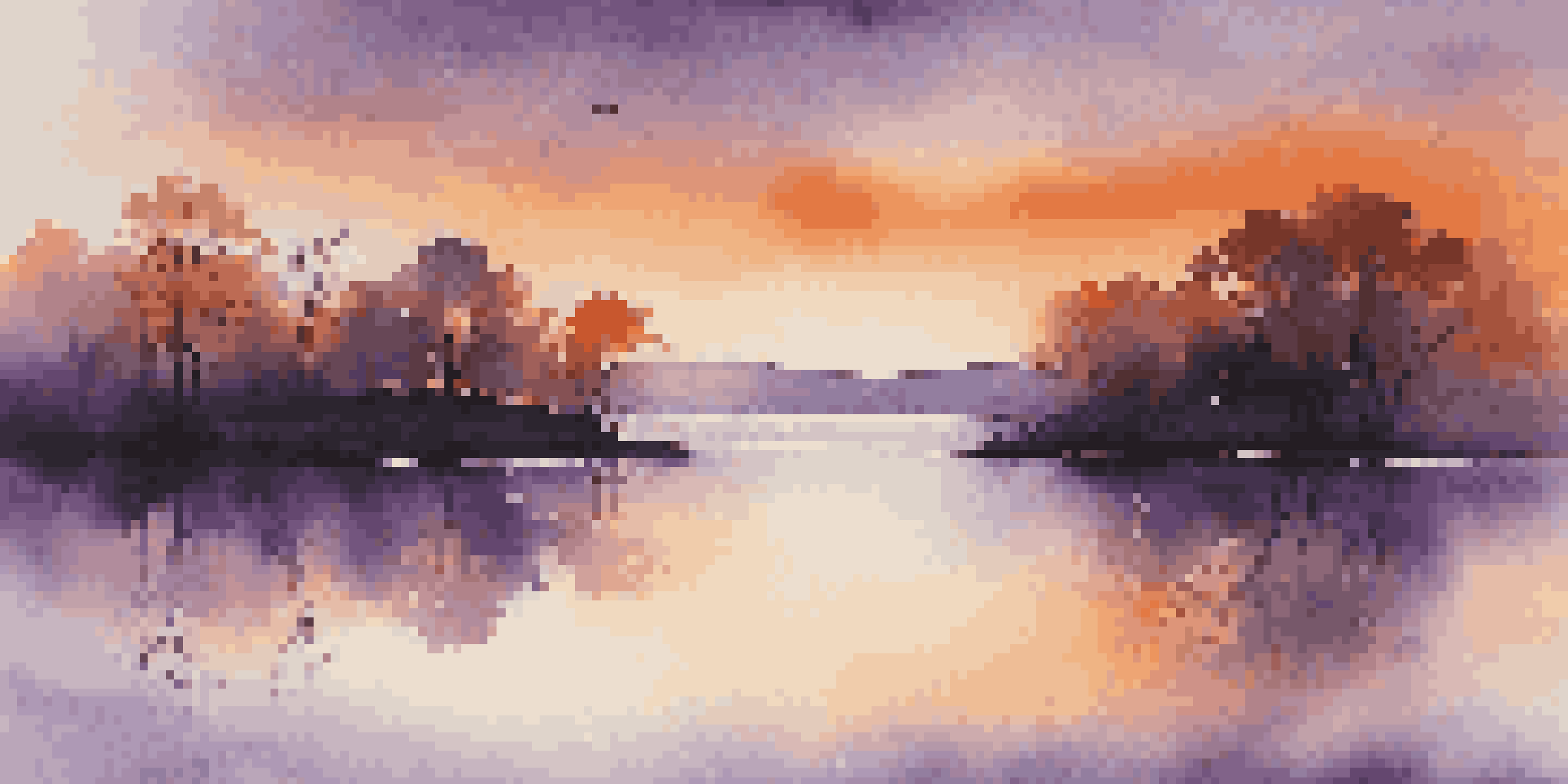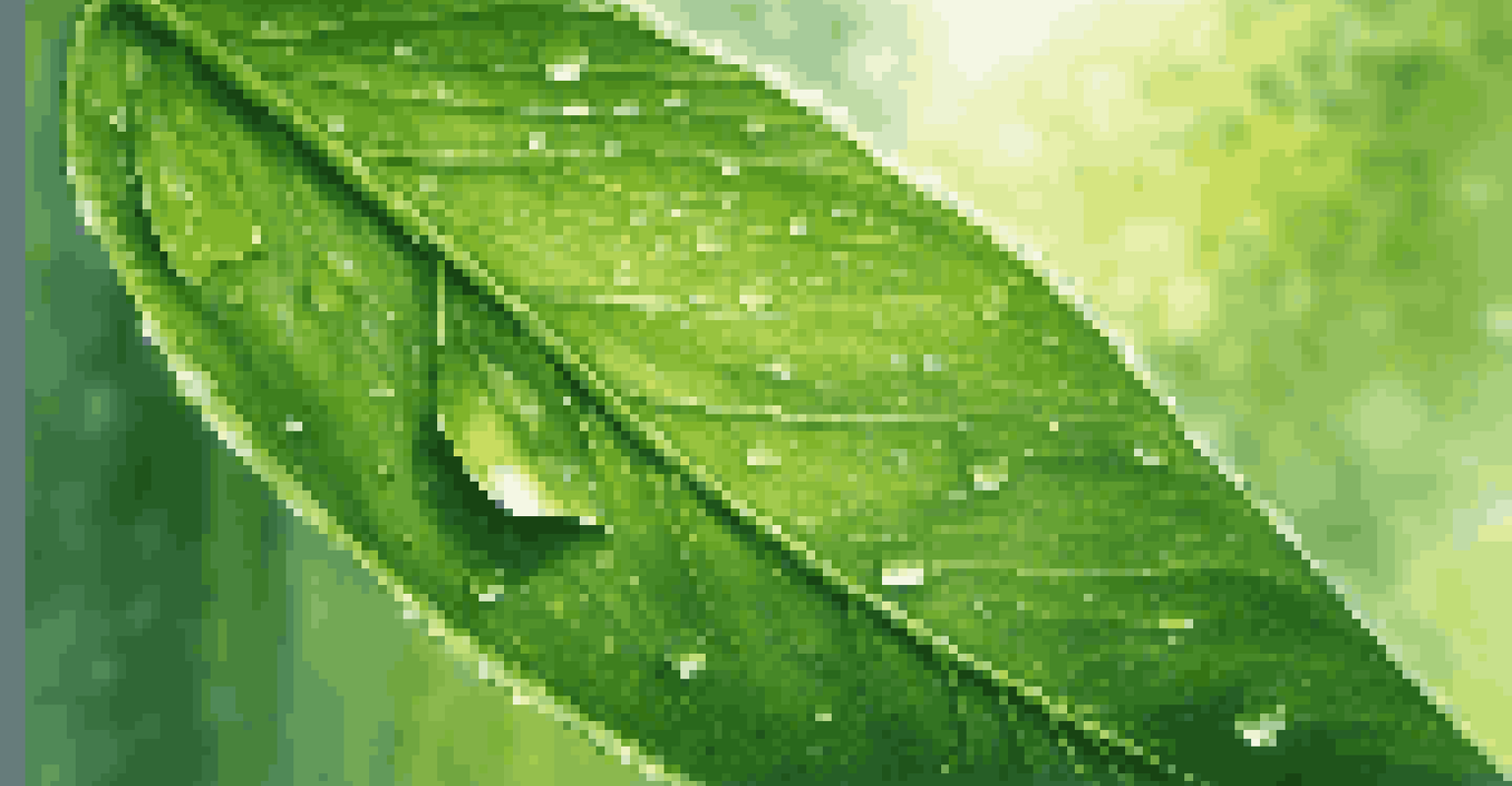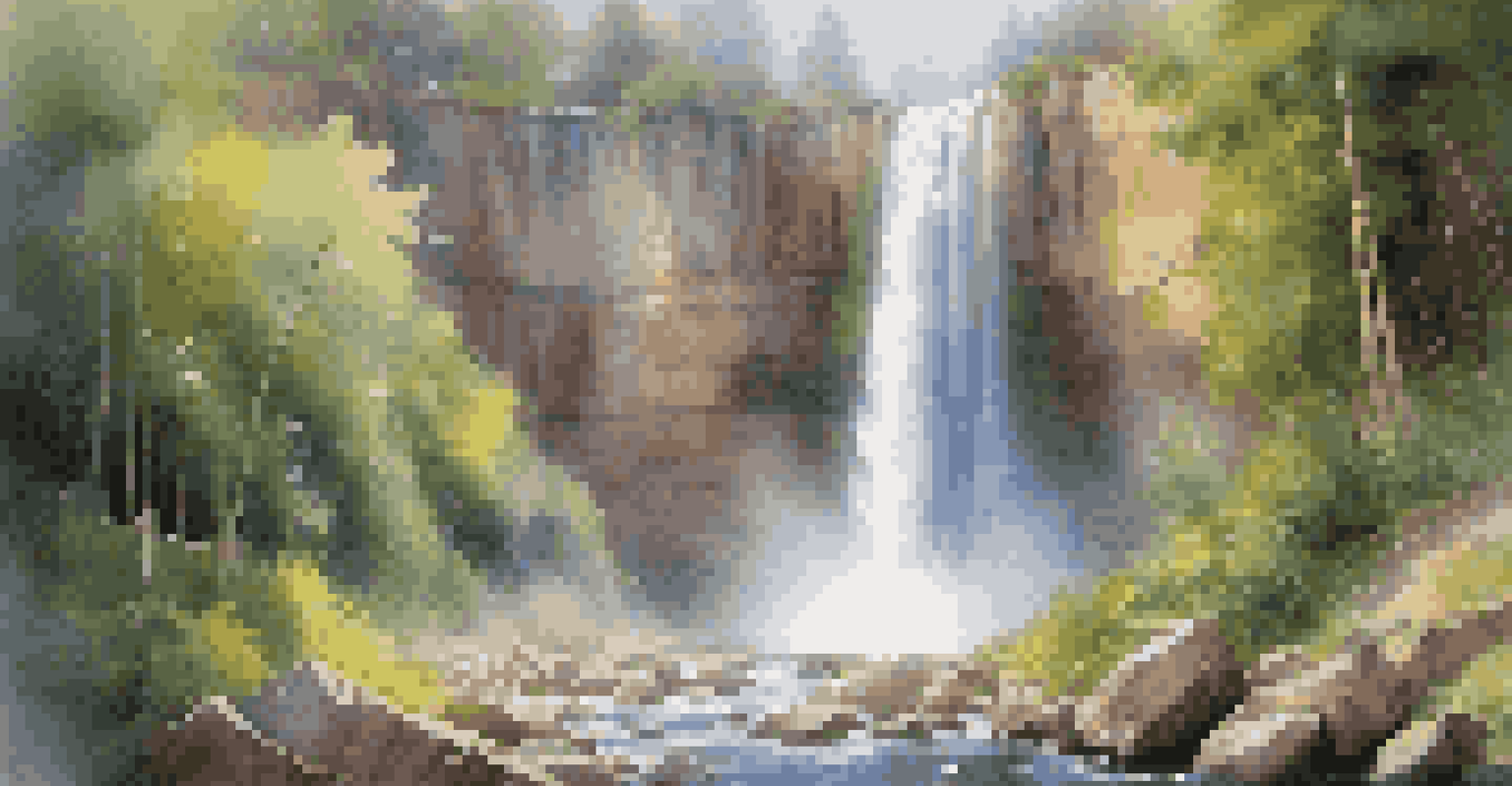Using Filters to Enhance Your Travel Photography

Understanding the Basics of Photography Filters
Photography filters are essential tools that can enhance your images in various ways. They are typically made of glass or resin and can be attached to your camera lens. Understanding how they work can help you decide which filter to use for different situations, whether you're shooting landscapes, portraits, or cityscapes.
Photography is a love affair with life.
Filters can manipulate light entering the camera, altering color balance, contrast, and exposure. For instance, a polarizing filter reduces reflections and enhances color saturation, making your photos pop. Knowing the basic functions of filters can significantly improve your travel photography skills, allowing you to capture stunning images.
By incorporating filters into your toolkit, you can expand your creative possibilities. Imagine standing in front of a breathtaking sunset and being able to capture the vibrant colors just as you see them. Filters help you achieve that and much more, making them an invaluable addition to your gear.
The Magic of Polarizing Filters
Polarizing filters are like sunglasses for your camera, helping to manage glare and reflections. When you're shooting near water or glass, these filters can dramatically improve your images by reducing unwanted shine. For example, a polarizer can make the sky bluer and the clouds more defined, giving your landscapes a more dramatic look.

Using a polarizing filter is simple—just twist it while looking through your viewfinder to see the effects in real time. It’s particularly useful during midday when the sun is at its peak. This filter also helps to enhance colors, making greens and blues appear more vibrant, which is especially beneficial for nature photography.
Enhance Photos with Filters
Photography filters can significantly improve image quality by manipulating light, color, and exposure.
However, be mindful of the filter's effect on exposure. A polarizing filter can reduce the light entering the lens by about one to two stops, so you may need to adjust your settings accordingly. When you master the use of polarizers, you'll find that your travel photos become much more vivid and engaging.
Exploring ND Filters for Long Exposures
Neutral Density (ND) filters are fantastic for achieving long exposure shots, even in bright conditions. They work by reducing the amount of light that reaches your camera's sensor, allowing you to use slower shutter speeds without overexposing your images. This is perfect for capturing silky waterfalls or smooth ocean waves when you're on your travels.
The best camera is the one you have with you.
Imagine standing by a rushing waterfall, and with an ND filter, you can create a dreamy effect, making the water look soft and ethereal. This technique transforms ordinary scenes into extraordinary photography, adding a unique touch to your portfolio. ND filters come in different strengths, so you can choose the one that best suits your shooting conditions.
It's important to experiment with various ND filters to see how they impact your photos. Start with a 3-stop filter for a subtle effect, then gradually work your way up to stronger ones for more dramatic results. With a little practice, you'll master the art of long exposures, enhancing your travel photography like never before.
Color Filters: Adding a Unique Touch
Color filters can change the mood of your photos by altering the color palette. Traditionally used in film photography, these filters can still have a place in digital photography, especially for creative shoots. For example, a red filter can enhance the contrast in black-and-white images, creating stunning landscapes with striking clouds.
In travel photography, using color filters can evoke specific feelings or highlight certain aspects of a scene. A warm filter can add a golden glow to sunsets, while a cool filter can create a serene atmosphere in a snowy landscape. This flexibility allows you to express your artistic vision more vividly through your images.
Polarizing Filters Boost Colors
Polarizing filters reduce reflections and enhance color saturation, making landscapes and nature shots more vivid.
When using color filters, it's essential to consider how they affect white balance. If you're shooting in RAW format, you can easily adjust the colors in post-processing. However, it's always a good idea to preview the effect in-camera, as this will help you decide the best approach for each shot.
Using Graduated Filters for Balanced Exposures
Graduated filters are particularly useful for landscape photography, as they help balance the exposure between the bright sky and darker land. These filters are darker at the top and gradually transition to clear at the bottom, allowing you to manage high-contrast scenes effectively. For instance, if you're photographing a sunset, a graduated neutral density filter can help retain the details in both the sky and the foreground.
When positioned correctly, these filters can prevent blown-out highlights while keeping the foreground well-exposed. This technique allows you to capture more dynamic range in your photographs, ensuring that both the sky and the land are beautifully represented. Many photographers use graduated filters to enhance their travel images, particularly when shooting at dawn or dusk.
Experimenting with graduated filters can lead to stunning results. You can find soft or hard transitions depending on the scene you're capturing. Ultimately, mastering this technique will help you create more balanced and eye-catching travel photographs.
Protecting Your Lens with UV Filters
While UV filters were once essential for blocking ultraviolet light, their primary use today is lens protection. When you're traveling, your camera gear is often exposed to the elements, and a UV filter acts as a safeguard against scratches, dust, and moisture. It’s like putting a protective layer on your lens, giving you peace of mind during your adventures.
Even if you don’t shoot with film, a UV filter can help keep your lens clean and free from smudges. If you accidentally drop your camera or bump it against something, having a UV filter can save your expensive lens from damage. This is especially crucial for photographers who frequently travel to rugged environments.
Protect Your Lens with UV Filters
UV filters serve as a protective layer for your lens, safeguarding it against scratches and environmental damage.
While some purists argue that filters can affect image quality, a good-quality UV filter will have minimal impact on your photos. In fact, many photographers use them as a first line of defense, ensuring their lenses stay pristine. So, invest in a decent UV filter to protect your gear while still capturing beautiful travel moments.
Practical Tips for Using Filters on the Go
When you're on the move, ease of use is critical, especially with filters. Consider investing in a filter holder system that allows you to swap filters quickly without fumbling around. This is particularly handy when you're shooting in changing light conditions, such as during sunrise or sunset, where every second counts.
It's also essential to keep your filters clean. Dust, fingerprints, and smudges can ruin your photos, so carry a microfiber cloth to wipe them down before shooting. Additionally, be mindful of lens flare when using filters, particularly in bright sunlight. Position your camera to minimize flare and maximize the quality of your images.

Lastly, always have a plan for which filters to use based on your shooting environment. Before you embark on a trip, think about the locations you'll be visiting and the types of shots you want to capture. This preparation will ensure you make the most of your filters, leading to stunning travel photographs.